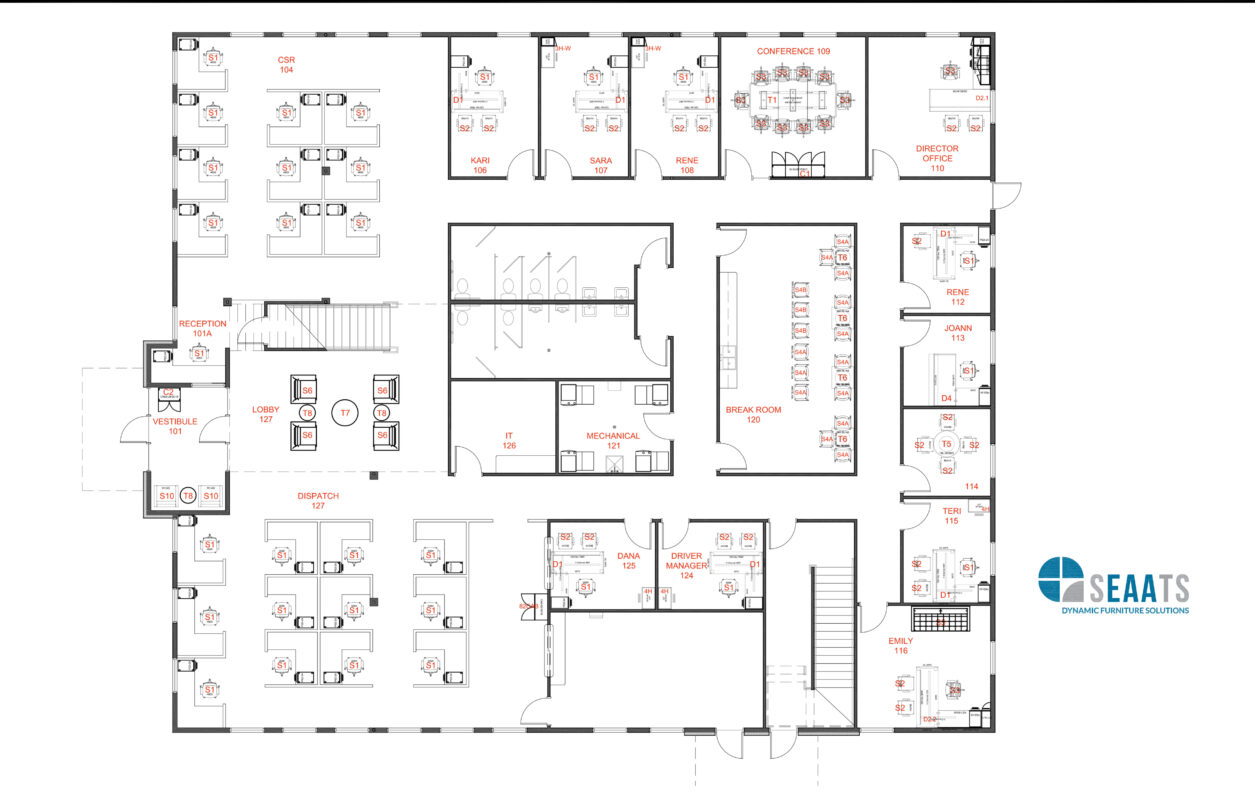A well-designed office not only looks great, but it can also have a direct impact on the productivity of your employees. By carefully selecting the right pieces of office furniture, you can create an environment that is conducive to productivity and performance. Let’s take a look at some of the elements that make up an efficient workspace and how they can help improve employee performance.
Productivity in the Workplace
Productivity in the workplace is an important metric for most businesses, as it can be indicative of employee morale, job satisfaction, and overall success. In recent years, there has been a shift toward creating more efficient workspaces that foster better collaboration and productivity among employees. This trend includes the use of ergonomic office furniture to reduce fatigue and stress levels while providing lumbar support; private office suites or cubicles to provide privacy; and careful consideration when it comes to layout plans that ensure adequate air circulation and natural light exposure. All of these elements work together to create an environment where employees can stay motivated, productive, and engaged throughout their workday.
The Differences Between Productive and Non-Productive Worker
When it comes to productivity in the workplace, there are distinct differences between productive and non-productive workers. Productive employees are more likely to stay focused on their tasks, finish them within a given timeframe, and be motivated to complete additional tasks when needed. On the other hand, non-productive workers may struggle with staying on task or completing projects efficiently due to lack of motivation or interest. Furthermore, they may also procrastinate or waste time by taking frequent breaks throughout the day without actually accomplishing anything. It is important for employers to recognize these distinctions in order to create an environment that encourages higher levels of productivity among all employees.
Think About Your Layout
One important way to improve employee performance is by giving careful thought to your office layout. This means more than just rearranging office furniture —it involves taking into account things like airflow patterns and noise levels when deciding on where certain pieces should go within the workplace. Keeping traffic patterns clear will help prevent distractions while ensuring adequate air circulation will promote a healthy working environment for everyone in the room—both physically and mentally! If possible try placing desks in areas with natural light whenever possible; studies suggest this can result in greater employee satisfaction and improved productivity.
Privacy Matters Too
Creating private spaces within your office is essential for open offices with multiple employees working side by side. Private office suites provide much-needed isolation from distractions such as loud conversations or phone calls. They also give workers a place to focus on their tasks without interruption from colleagues or supervisors. For smaller offices with limited space, cubicles or dividers may be used instead of full-sized office suites. However, no matter what type of space you decide to use, it’s important that all employees have access to some degree of privacy while they work in order to maximize their concentration and efficiency.
Ergonomics Matter
Another way to create an office environment that increases performance is by making sure that it is ergonomic. Ergonomic furniture helps reduce fatigue, discomfort, and stress while providing lumbar support—all of which are key to productive employees. The Washington State Department of Labor and Industries review found a 25% increase in productivity from implementing ergonomic solutions at work. Ergonomic chairs should be adjustable so that they can be tailored to the individual user’s needs; desks should have enough space for the user’s monitor, keyboard, mousepad, and other items; and lighting should be bright enough for reading yet soft enough to reduce eyestrain. All of these elements work together to create an environment where employees can stay alert, focused, and productive throughout the day.
Standing Desks vs. Traditional Desks
Standing desks, also known as sit-stand desks, are becoming increasingly popular as an alternative to traditional office chairs. These adjustable workstations allow you to switch between sitting and standing throughout the day, providing a range of potential benefits for both physical and mental health. They also help reduce the need for increased breaks, as they allow for physical movement while staying focused on work tasks right at an employee’s desk.
Conclusion
Investing in high-quality office furniture that encourages movement and productivity is an important step toward creating a successful workspace. However, creating an efficient workspace doesn’t just mean having premium furniture—it requires thoughtful consideration when it comes to both layout and ergonomics as well as providing a balance between privacy and collaboration among workers. It’s also essential for employers to recognize differences between productive and non-productive workers in order to create an environment where everyone can thrive and produce quality work. By taking all of these considerations into account when planning out your office design you will ensure that your team has everything they need for successful work days!

